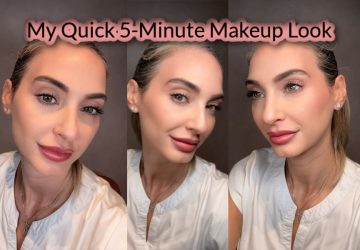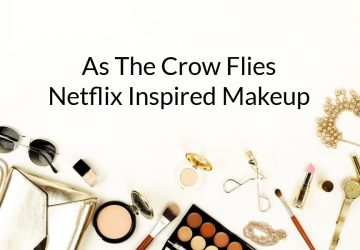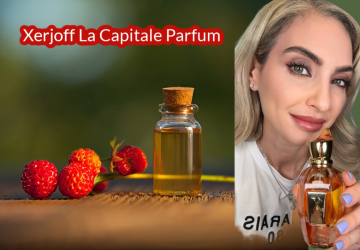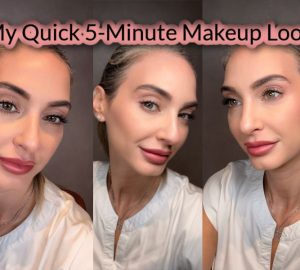This is article one of two. In this article, we will look at what skin pigmentation is and the different types of skin pigmentation. In the next article, we will look at skin pigmentation treatments.
What is skin pigmentation?
Pigmentation means coloring. Skin pigmentation disorders affect the color of our skin. Uneven skin tone can make us feel like we are ageing even if we can not see deep lines on our face. When our skin is young and healthy, its pigment making melanocytes distributes the surrounding cells evenly with melanin, so our skin is a uniform colour. However when skin is damaged or affected by the sun, hormones, pregnancy, the contraceptive pill, acne scarring and ageing in general, the body can produce too much melanin and it can also disperse it unevenly so a dark, patchy colour seems to appear on our skin surface. These can appear on the face, hands, decollete and shoulders.
Sun exposure and specifically UVA rays penetrate deep into our skin and cause ageing. UV rays are responsible for at least 80% of all skin ageing. What you may not be aware of is that sun spots may take 10 to 20 years to develop, so if you are noticing sun spots now, it was most probably caused during childhood.
What are the different types of skin pigmentation?
Freckles – freckles are flat circular spots which are usually tan or light brown in colour. While freckles are an extremely common type of hyperpigmentation, they are more often seen among people with a lighter skin tone. Too much sun can cause new freckles to develop and darkening existing ones.
Solar Lentigines – also referred to as liver spots or sun spots, are pigmented spots with a clearly defined edge. They may occur anywhere on the body and vary in colour from light brown to black. These spots are caused by UV sun exposure and the degree depends on how much UV light these melanin pigments are exposed to. These must be monitored as they may develop into skin cancer and melanoma.

Post Acne Pigmentation – these develop from healed acne wounds. There are two types of post-acne pigmentation. The first type is marks which are reddish in colour and caused by broken blood capillaries that have yet to heal and the second type is marks which are dark in colour resulting from an overproduction of melanin in reaction to skin inflammation at the affected area. Without proper treatment, post-acne pigmentation may take months or even years to fade off.
Melasma / Chloasma – this is a type of hyperpigmentation which is more prevalent among people with a darker skin tone. Patchy brown discolouration spreads across certain parts of the face, making the overall skin tone look dull. During pregnancy we are more susceptible to developing pigmentation (melasma or chloasma). The ‘Mask of Pregnancy’, as it is often called, is a small dark patch that develops on the cheeks, jawline, upper lip, nose and forehead in the shape of a mask. This is due to hormonal changes that stimulate a temporary increase in the amount of melanin the body produces. Sun exposure can make pigmentation worse. About 50-70% of pregnant women are affected by chloasma.
Post-Inflammatory Hyperpigmentation (PIH) – This is a response to injury of the skin and can be the result of acne, burns, friction or aggressive clinical treatments such as chemical peels, dermabrasion, laser and IPL. This condition often resolves with time and generally responds to topical products, although it can recur.
Why am I developing skin pigmentation?
Everyone can achieve a flawless complexion. With that said, it can be puzzling as to why despite applying sun protection every single day, new pigmentation marks appear and existing ones become darker and bigger in size. The answer is simple – pigmentation does not surface overnight. It is the accumulation of the dark pigment, melanin, in our skin that gradually leads to the appearance of dark facial spots. Melanin production, in turn, is triggered by sun exposure. It is really important in order to have a clear complexion, we should never underestimate the importance of sun protection; starting early is the best thing I can recommend for our skin.
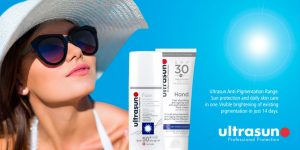
Ultrasun, the best I have ever tried!
Ultrasun is the best sun protection skincare range I have ever tried. They have developed a unique anti-age & anti-pigmentation SPF50+ formulation for the face and SPF30 for the hands. Use on face, neck and décolleté every single day to reduce the appearance of sun-induced ageing and pigmentation.
In my next article, we will look at skin pigmentation treatments.
If you have any questions, please ask in the comments section below or send me a message.
Have a fabulous week!

